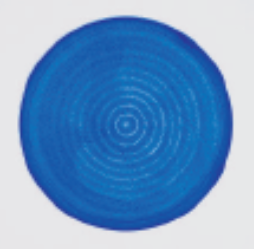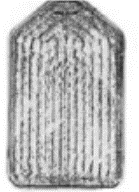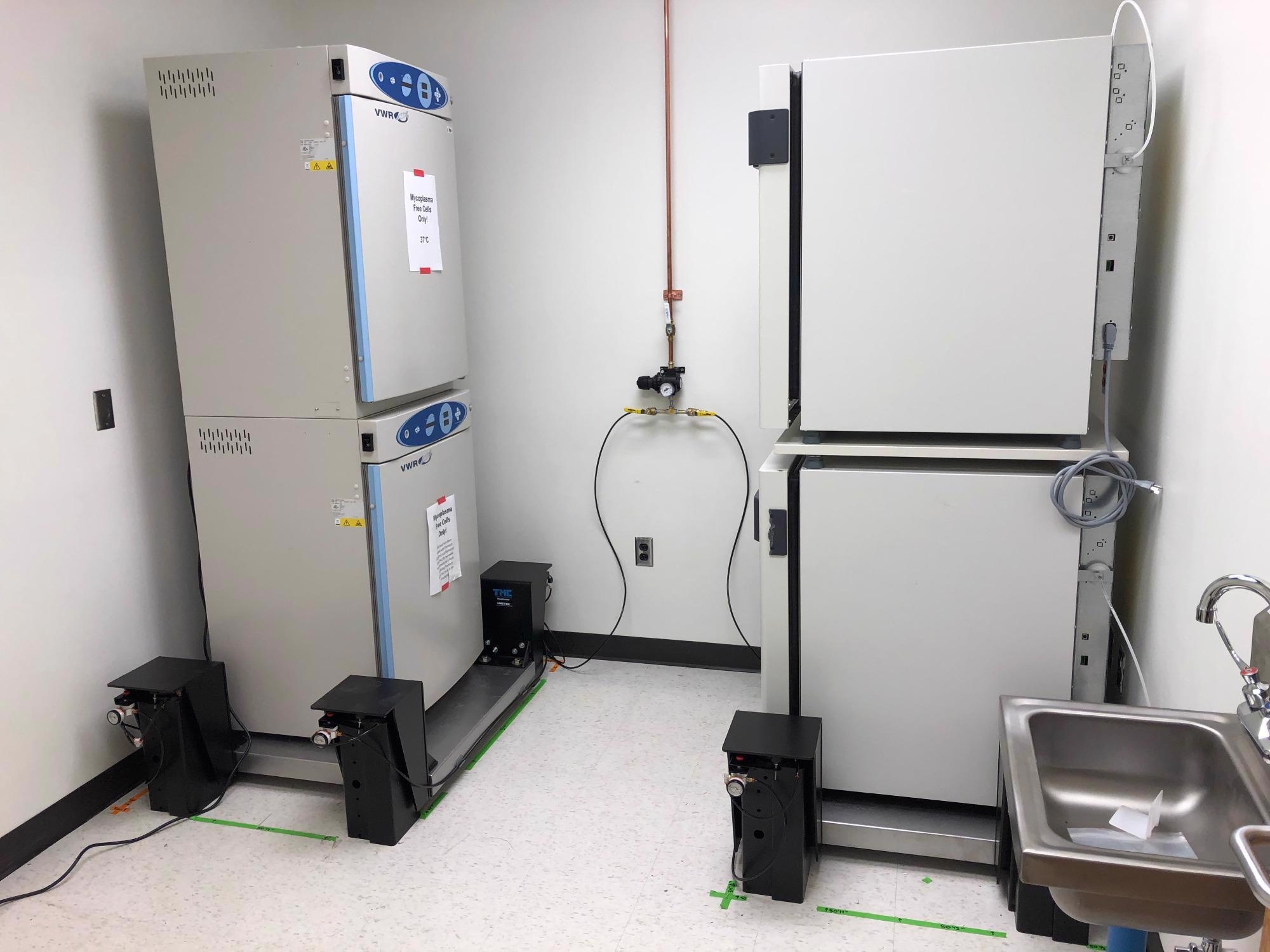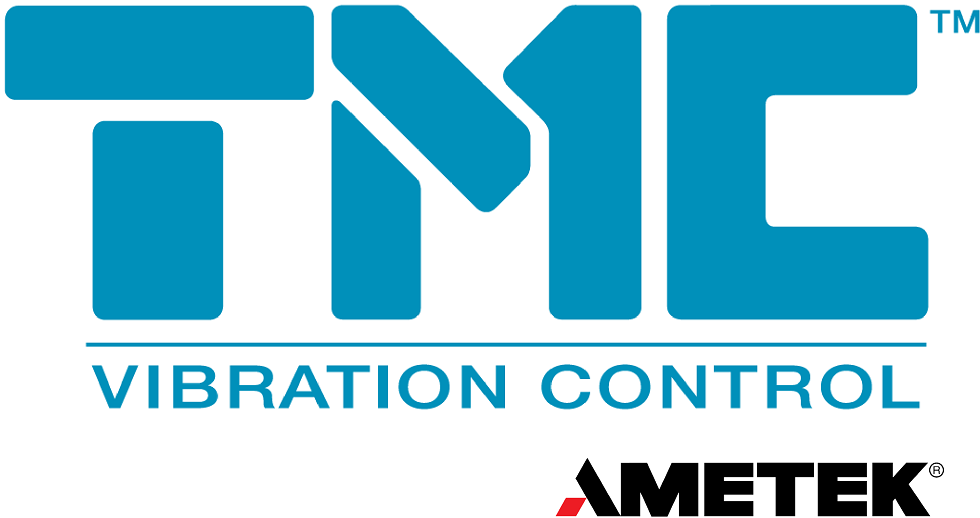Cell culturing is a frequently applied technique in biology to carefully grow a particular type of cell. A great deal of care is taken to maintain sterile conditions during the preparation of cell cultures. They are usually prepared in a sterile, vented hood with materials that have been disinfected prior to use.
Cell cultures are then placed carefully into an incubator to maintain a controlled, sterile environment for optimum cell growth. For example, mammalian cells are usually cultured in a CO2 incubator at a temperature of 37 degrees C, extremely high humidity, and a CO2 level of 5-7%. These conditions simulate those in the body.
However, the real question is, is that all you need to worry about? Recently, it has come to light that undesirable vibration can have a detrimental impact on cell culture incubators. Vibration may be present in the incubator itself due to fans or circulation of water to heat the incubator. Yet, vibration most typically comes from the surrounding environment.

Figure 1. Vibration-induced concentric ring pattern in a 100 mm dish containing chick embryo fibroblasts that was stained 1 hour after plating.
Image Credit: TMC Vibration Control
These types of vibration problems have been well known in the semiconductor, photonics, and microscopy industries for over 50 years. For that reason, equipment suppliers in these industries generally have a vibration specification for the facility in which their products will be placed. This is not the case for incubators, though it should be.
A number of incubator manufacturers are starting to understand the issues that vibration can cause.
“Incubator vibration is responsible for some of the most bizarre growth patterns that occur in culture vessels. Its effect primarily occurs on cells when they are trying to initially attach to the surface following inoculation of the vessel. In dishes, vibration will push cells to the edges or middle of the vessel or will sometimes form concentric rings of cells. Figure 1 shows this type of pattern in a chick embryo fibroblast culture.”1
This is an additional example from a separate incubator manufacturer. “A typical example of standing waves in a cell culture flask is shown in Figure 2. In this case, the standing waves have been formed across the flask.

Figure 2. Cell culture growth in a flask when standing waves are present.
Image Credit: TMC Vibration Control
How to eliminate the problem?
In a typical cell culture lab, vibrations can come from a number of sources. Aside from the incubator fan, they can come from a centrifuge placed next to the incubator, a freezer or refrigerator turning on and off, and even from the climate control system in the cell culture lab. Eliminating vibrations may not always be possible due to the construction of the fan or placement of the fan motor. Since the problem of vibration is essentially due to resonance in frequency, you can try to alter the frequency of your equipment (e.g., incubator) by, for example, placing something heavy in one corner of the incubator; but be aware of the risk of potential contamination in the incubator and be prepared to take necessary measures to minimize the risk.”2
While these tips are sufficient for minimizing the influence of vibration, there is an even better method to help deal with vibration problems in the lab; isolation of the entire incubator from unwanted vibration by positioning it on an anti-vibration platform like the MaxDamp®.

Figure 3. Incubators stacked on TMC MaxDamp vibration isolation platforms.
Image Credit: TMC Vibration Control
In this example, two incubators were loaded on top of each other and positioned onto the MaxDamp vibration isolation platform. MaxDamp utilizes Gimbal Piston air isolator legs to significantly reduce the transmission of floor vibration that other instruments cause.
For instance, if a centrifuge was in operation near the incubators, the vibration from the centrifuge could affect the incubators generating the vibration patterns we see in the cell cultures.
When the incubators are placed on the MaxDamp platforms, they are largely unaffected by vibration from centrifuges, HVAC systems, foot traffic, or any other common vibration sources found in life science facilities.
Unnecessary risk should be avoided at all costs when it comes to handling valuable cell cultures. Protect incubators from undesirable vibration sources with vibration isolation solutions customized to a specific application.
References
- Ryan, John A. “A Guide for Identifying and Correcting Common Cell Growth Problems with Adherent Cells.” We Get You, www.corning.com/worldwide/en/products/life-sciences/resources/webforms/we-get-you-a-guide-for-identifying-and-correcting-common-cell-growth-problems-with-adherent-cells.html.
- Vibration Patterns in Cell Culture Vessels, 2018, assets.thermofisher.com/TFS-Assets/BID/Technical-Notes/vibration-patterns-cell-culture-vessels-technical-note.pdf.

Technical Manufacturing Corporation Vibration Control
TMC’s precision floor vibration isolation systems product line ranges from simple, desktop isolated microscope bases, to any size optical top, to sophisticated active, inertial vibration cancellation systems featuring piezoelectric actuators and digital controllers.
Their latest innovations include STACIS 2100, STACIS® iX SEM-Base™, STACIS® iX Stage-Base™, STACIS® iX LaserTable-Base™, and Mag-NetX™ magnetic field cancellation systems.
TMC is the leader in precision floor vibration isolation technology. Their customers include major research centers, OEM and end-user semiconductor manufacturers, university research laboratories, drug discovery companies, and nanotechnology labs.
With few exceptions, their product line has been designed and manufactured at TMC. With vertically integrated manufacturing, they can make complex mechanical structures quickly and cost effectively.
No time is lost in misinterpreting specifications and quality expectations. Many of their products are custom manufactured for OEM and end users. One of the major advantages of making everything at TMC is that tools such as 3D engineering models can go directly to our factory floor without missteps and delays.
TMC is now part of AMETEK, a leading global manufacturer of electronic instruments and electro-mechanical devices. TMC joins AMETEK as part of the Ultra Precision Technologies division of AMETEK EIG.
Ultra Precision Technologies is a pioneer in the development of ultra precision measurement instruments and a global leader in ultra precise machine tools and manufacturing systems for the semiconductor, photovoltaic, nanotechnology, military, defense, and ophthalmic lens markets.
AMETEK, Inc. is a leading global manufacturer of electronic instruments and electromechanical devices. AMETEK has approximately 11,600 colleagues working at more than 100 manufacturing facilities and more than 100 sales and service centers in the United States and around the world.
Now part of AMETEK, they remain TMC. The same people in the same location committed to pioneering our field by designing and manufacturing the most advanced precision floor vibration isolation systems commercially available.
Sponsored Content Policy: News-Medical.net publishes articles and related content that may be derived from sources where we have existing commercial relationships, provided such content adds value to the core editorial ethos of News-Medical.Net which is to educate and inform site visitors interested in medical research, science, medical devices and treatments.